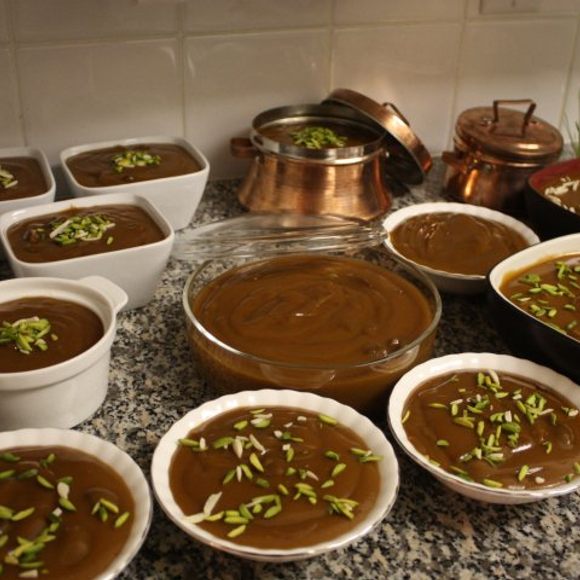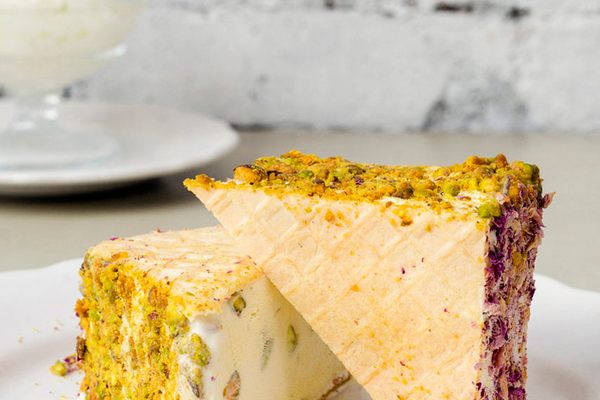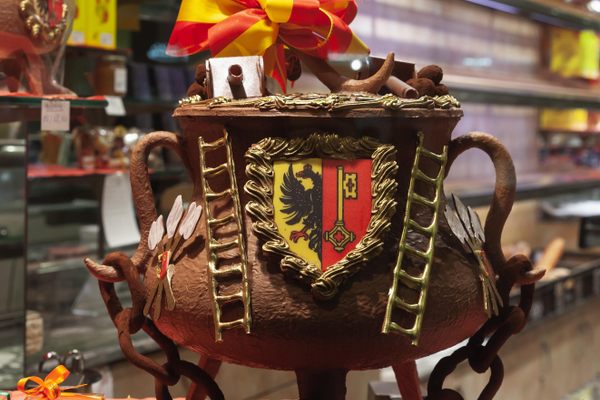For a dish with such simple ingredients—wheat, oil, flour, and water—sumalak’s significance in the parts of Central Asia where it’s prepared is notable. Communities work together to make the sweet-tasting wheat pudding for the Nowruz festival—the Persian New Year, celebrated on the first day of spring—in a tradition that goes back thousands of years. The cooking ritual is a symbol of friendship, community, and good luck.
Since a large pot of sumalak requires constant stirring over several hours, preparing the dish becomes a communal affair. During the Nowruz festival, women take turns stirring the mixture all night long in a joyous event that involves dancing, singing, laughing, and telling stories.
The recipe may vary from region to region, but the gist is simple. The star ingredient in sumalak is sprouted wheat grains, which give the porridge its unique sweet taste. Women place the wheat in water until it begins to sprout, then crush it into a paste and mix it again with water until a whitish liquid oozes from the grains. They then toss the mixture into a cauldron with water, boiling oil, and flour, stirring for several hours. In some rituals, seven stones are placed in the pot to keep the paste from burning. When the sumalak is finally ready, it’s served warm to friends and family, enjoyed with fresh bread and a pot of tea.
The origins of the dish, believed to date back to pre-Islamic Persia, are shrouded in myth and superstition. Some Uzbek believe the name sumalak means “30 angels” after a legend of how the dish came to be—that angels helped create a tasty porridge from nothing but wheat, flour, water, and seven stones for a poor mother with two hungry sons. Or the name may come from the old Turkish word suma, meaning “swollen wheat.”
The dish also brings hope for the year to come. Legend has it that if you’ve tasted sumalak from seven different cauldrons, it will bring happiness. If you make a wish after trying it for the first time, that wish will come true. It’s a symbol of fertility, too, and new brides hoping for children can often be found tucking into a bowl.
Written By
 Meg
Meg

















